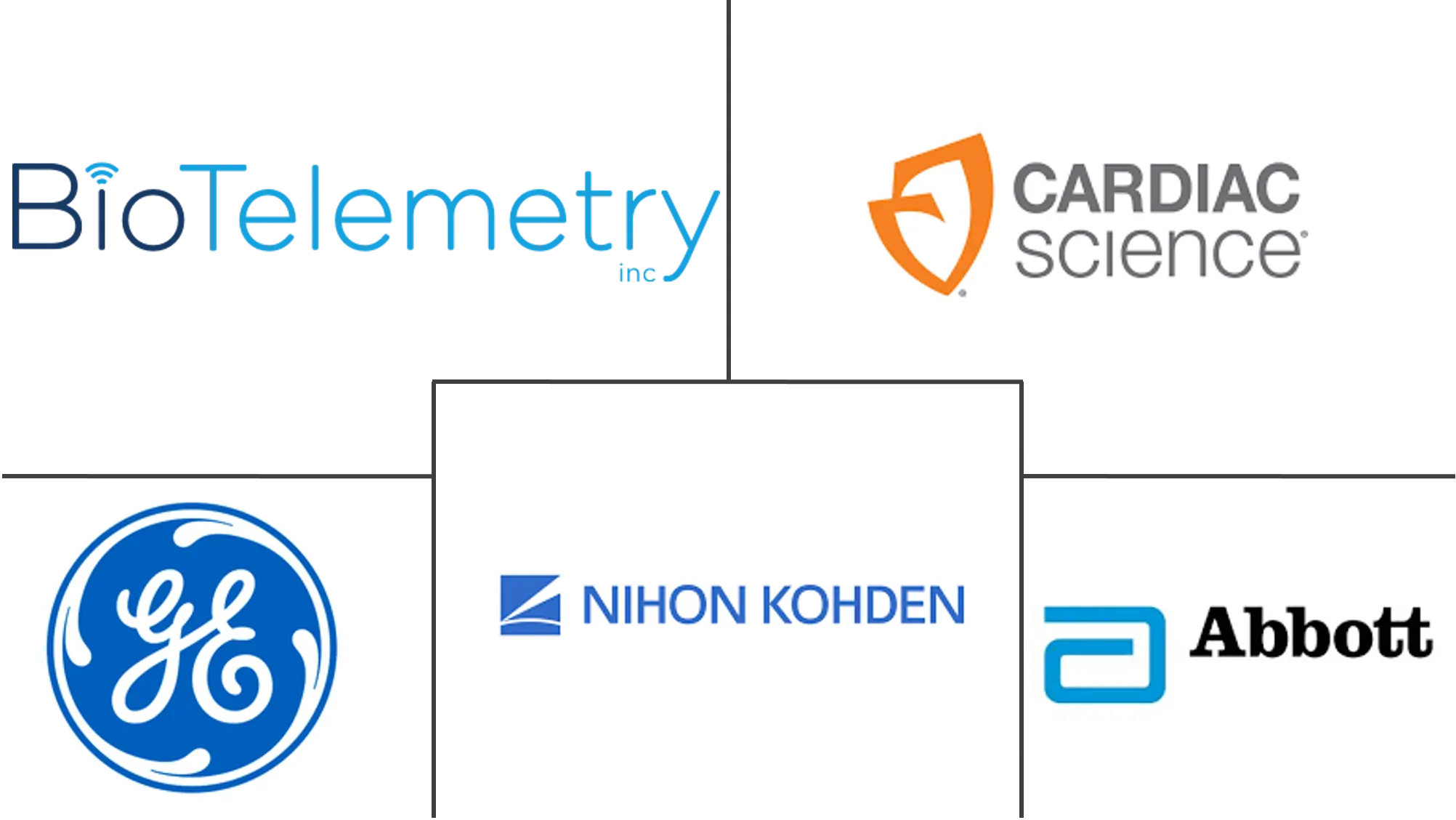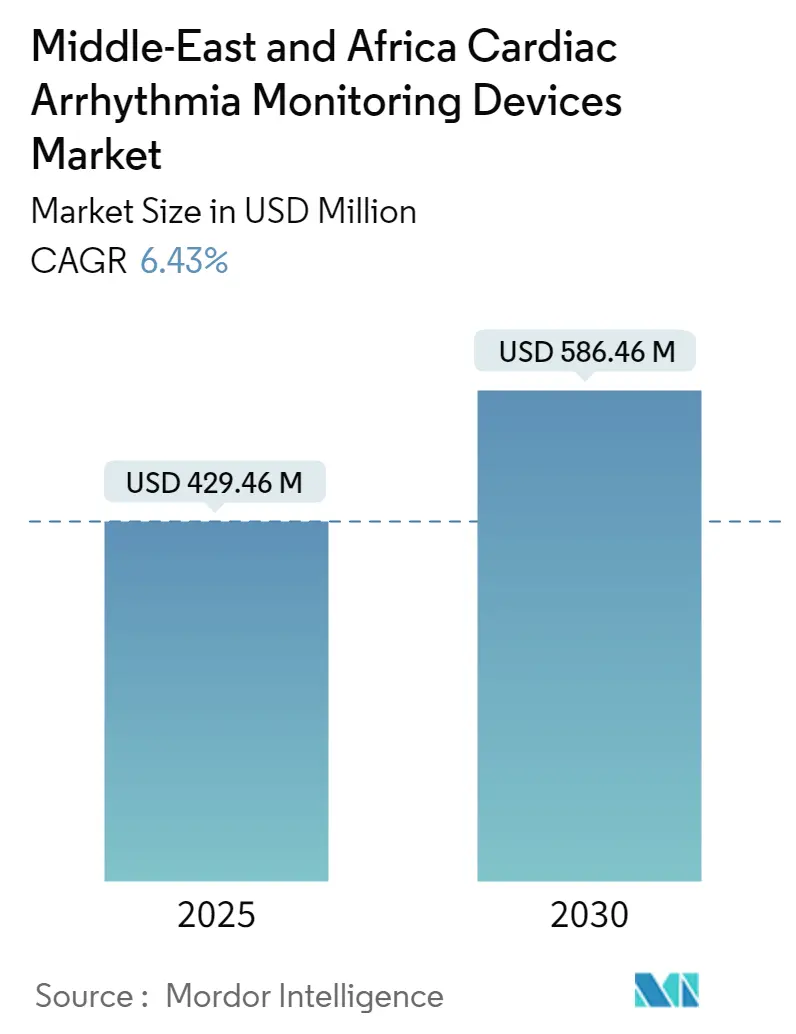
Middle-East & Africa Cardiac Arrhythmia Monitoring Devices Market Analysis by Mordor Intelligence
The Middle-East & Africa Cardiac Arrhythmia Monitoring Devices Market size is estimated at USD 429.46 million in 2025, and is expected to reach USD 586.46 million by 2030, at a CAGR of 6.43% during the forecast period (2025-2030).
- The COVID-19 pandemic placed enormous pressure on hospitals and healthcare systems that were understaffed and overworked. For instance, according to the study published by MDPI, in January 2023, several serious and potentially fatal adverse events and complications have been documented in association with COVID-19 vaccinations, including cardiac arrhythmias in Saudi Arabia. Therefore, increased serious and potential cardiac events due to COVID-19 impacted the demand for cardiac arrhythmia monitors. Currently, as the market is gradually stabilizing due to the decline in COVID-19 cases resulting in the return of the normal demand levels for therapeutic and diagnostic procedures, the market is expected to gain its growth pace over the coming 2-3 years.
- Factors driving the market growth include the increasing prevalence of cardiovascular diseases and risk factors, technological advancements, and the growing adoption of cardiac arrhythmia monitoring devices. For instance, the study published by the National Institutes of Health in August 2021 concluded that the incidence of stroke in Saudi Arabia is 43.8 per 100,000. Personal history of hypertension was chosen as a risk factor by the majority of the participants (81.7%), followed by a personal history of stroke (74.1%) and personal history of dyslipidemia (57.2%).
- The study further stated that there was a low level of awareness regarding cardiovascular diseases and their risk factors, which resulted in a higher prevalence of the disease. Furthermore, according to a study published in the Cardiovascular Journal of Africa in May 2021, every hour, five people have suffered from a stroke, and ten people suffered a heart attack. Therefore, such a growing burden of cardiovascular diseases is expected to boost the market's growth over the analysis period.
- Additionally, various strategies adopted by the key market players, such as promotion, product launches, mergers, and acquisitions to enhance their product portfolio and growth, are anticipated to drive the market over the forecast period. For instance, in January 2023, UltraLinQ launched Holter Service, enabled by LifeSignals, a complete Wireless Holter Monitoring ECG Analysis and Reporting System, offering wireless ECG recording with clinical-grade wearable biosensors at Arab Health Exhibition and Congress.
- Thus the factors mentioned above are expected to drive the market's growth over the forecast period. However, the lack of proper reimbursement impeded the market's growth.
Middle-East & Africa Cardiac Arrhythmia Monitoring Devices Market Trends and Insights
Continuous Rhythm Monitoring Devices Segment Expected to Hold Significant Market Share over the Forecast Period
- Continuous rhythm monitoring devices allow continuous heartbeat monitoring of daily activities. The device registers each heartbeat and sends the information to a live monitor. Certified cardiac technicians, available 24 hours a day, analyze each transmission, respond to events that need immediate attention, and transmit diagnostic reports to the doctors. The rising prevalence of cardiac arrhythmia risks such as obesity, old age, and various other factors accounts for the development of the studied segment.
- For instance, according to the World Obesity Atlas report in 2022, the overall prevalence of obesity among women by 2030 was estimated to be 50%, while in men, by 37% in UAE. Obesity is a severe health issue beyond just being an aesthetic concern.
- Research shows it is closely related to several illnesses, including type 2 diabetes, sleep disorders, high blood pressure, and cholesterol, all linked to cardiac arrhythmia. Hence, increased risk factor such as obesity leading to cardiac arrhythmia is expected to increase the demand for continuous rhythm monitoring devices, thereby driving the segment growth.
- Various strategies adopted by the key market players, such as promotion, acquisition, and collaboration, support segment growth over the forecast period. For instance, in June 2021, Cardiac Insight, Inc. launched its Cardea SOLO ECG System at Arab Health 2021, the largest healthcare exhibition in the Middle East. Cardea SOLO combines a single-use, patient-friendly wearable ECG sensor with 100% in-clinic automated software managed by clinicians, the only solution. The Cardea SOLO, with its proven arrhythmia analysis technology, includes comprehensive report generation and clinical editing tools for the entire disclosure of data, creating efficiencies and reducing processing time for clinicians. Thus, the abovementioned factors are expected to contribute to segmental growth over the forecast period.
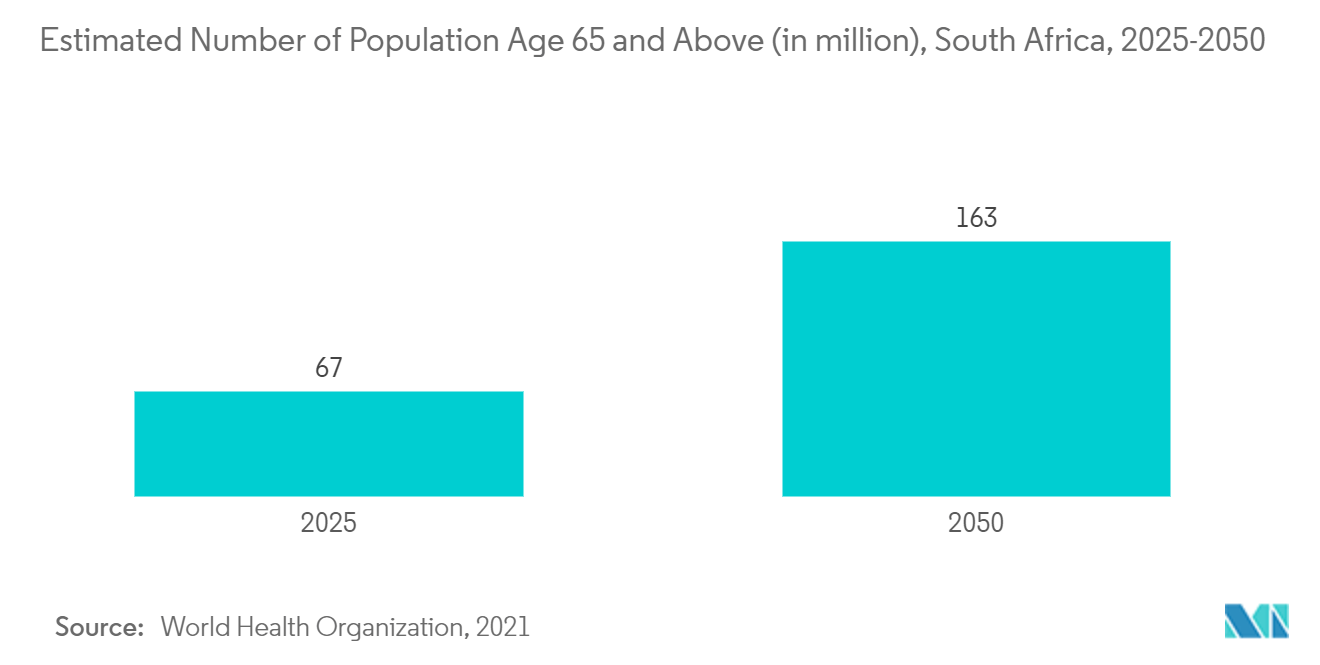
GCC is Expected to hold a Significant Growth in the Studied Market Over the Forecast Period
- The Gulf Cooperation Council (GCC) comprises six countries Saudi Arabia, Kuwait, Bahrain, Qatar, the United Arab Emirates (UAE), and Oman. Factors such as the growing burden of diseases in these countries, product launches, and strategic initiatives by market players will drive the studied market growth.
- Also, countries like UAE and Saudi Arabia are investing heavily in healthcare infrastructure, which is expected to impact the market positively. The prevalence of heart disease and the risk factor associated with cardiac arrhythmias, such as obesity and old age among the population, is expected to drive the demand for cardiac arrhythmia monitoring devices, thereby contributing to the growth of the studied segment.
- For instance, in the article by Khaleej Times in November 2022, every year in the UAE, around 8,000 to 10,000 patients suffer from a stroke, equating to about one patient every hour. Such a high frequency of heart diseases is expected to fuel the demand for cardiac arrhythmia monitoring devices, thereby boosting segment growth.
- Also, the launch of various awareness campaigns for atrial fibrillation among the population is expected to contribute to the growth of the studied segment.
- For instance, in October 2022, FibriCheck partnered with Pfizer and Altibbi and launched an awareness campaign to detect atrial fibrillation in the United Arab Emirates. Such awareness campaigns are expected to drive the demand for cardiac arrhythmia monitoring devices to reduce the diagnosis of the incidence of cardiac arrhythmia at early stages, thereby contributing to the growth of the market. Thus, all factors above are expected to boost the GCC's cardiac arrhythmia monitoring devices market over the forecast period.
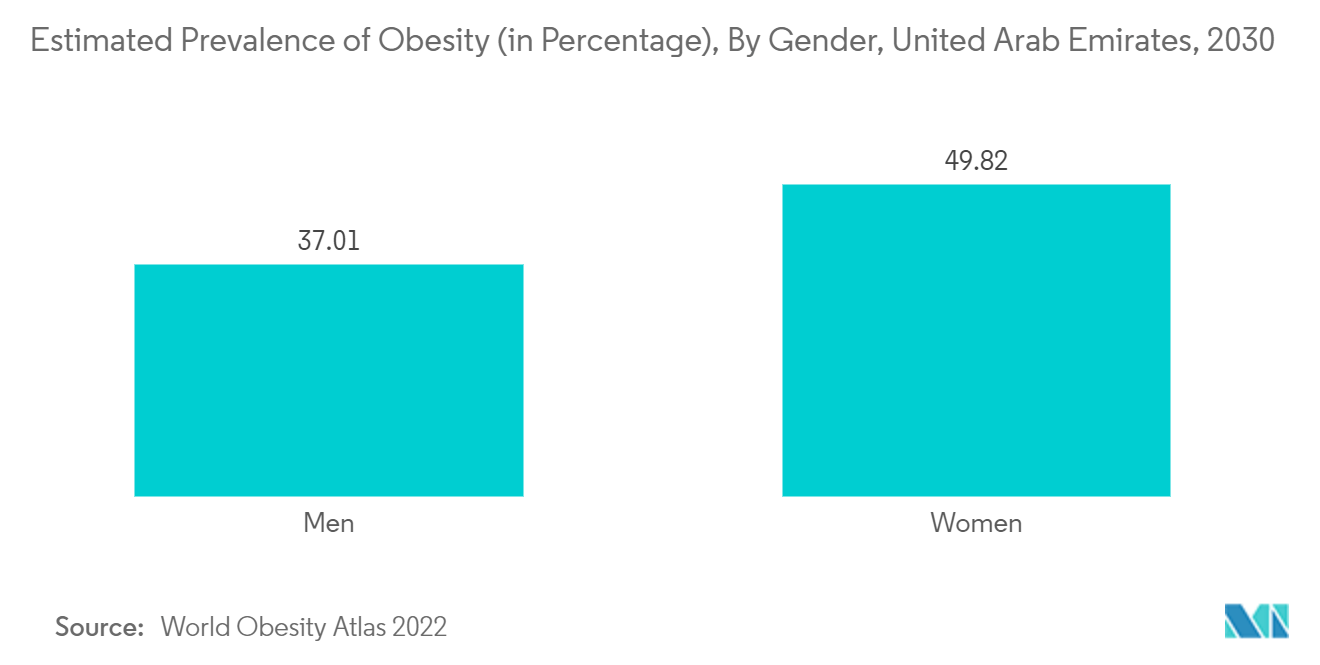
Competitive Landscape
The Middle East and Africa cardiac arrhythmia monitoring devices market is moderate due to the presence of companies operating regionally. The competitive landscape includes an analysis of companies with significant market shares. Some of the key companies in the market include Nihon Kohden, BioTelemetry Inc., GE Healthcare, Abbott, Philips, and Medtronic, among others.
Middle-East & Africa Cardiac Arrhythmia Monitoring Devices Industry Leaders
-
BioTelemetry Inc.
-
Cardiac Science Corporation
-
GE Healthcare
-
St. Jude Medical (Abbott)
-
Nihon Kohden Corporation
- *Disclaimer: Major Players sorted in no particular order
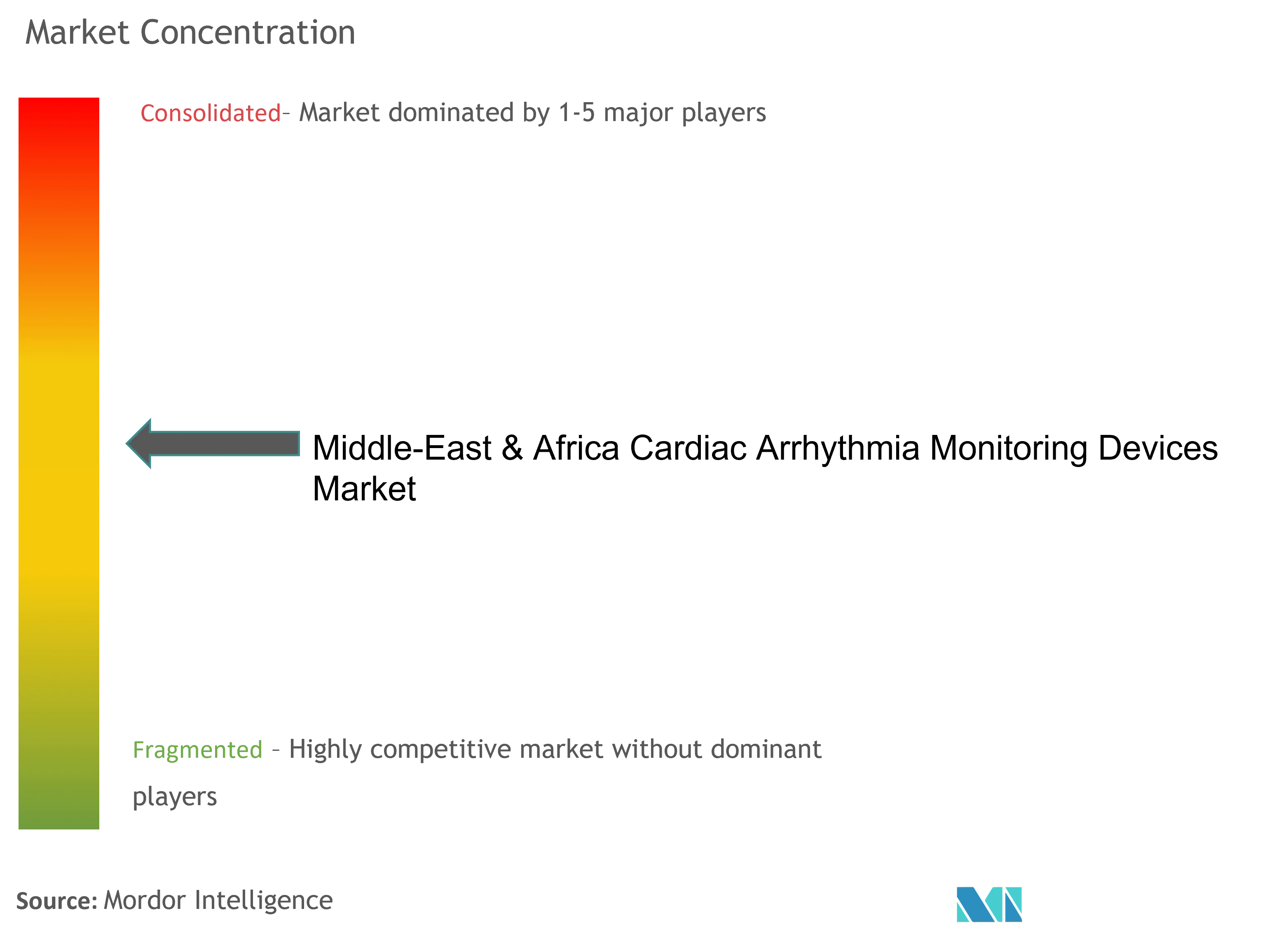
Recent Industry Developments
- July 2022: Xplore Lifestyle collaborated with an Israeli company to launch Cardiac Sense, the medical grade and wearable continuous monitoring device in the form of a watch that will. The watch can detect and read heart activity beat by beat. As a result, it can detect fatal arrhythmia like AFib and instantly notify doctors and family members of patients.
- August 2022: Thumbay University Hospital UAE's healthcare service provider launched a state-of-the-art facility specializing in chest pain to address the concerns of patients experiencing life-threatening events. The center's non-invasive cardiac care diagnostics services cover coronary catheterization, EKG-ECG, stent follow-up; 24-hour Holter monitoring, dobutamine stress echocardiography; Ex-ECG, congestive heart failure diagnosis and management, complete executive physicals, exercise stress test, cholesterol treatment, carotid, and peripheral doppler.
Middle-East & Africa Cardiac Arrhythmia Monitoring Devices Market Report Scope
As per the scope of the report, cardiac arrhythmia monitoring devices are used for monitoring patients at risk or with heart arrhythmia. These devices detect and alarm irregular heartbeats that are either too slow or too fast.
The Middle East and Africa cardiac arrhythmia monitoring devices market is segmented by devices (event monitoring devices, continuous rhythm monitoring devices, Holter monitoring devices, and other devices), service providers (mobile cardiac telemetry monitoring service providers and independent diagnostic testing facilities/clinics), and geography (GCC, South Africa, Rest of the Middle East and Africa).
The report offers the value (in USD) for the above segments.
| Event Monitoring Devices |
| Continuous Rhythm Monitoring Devices |
| Holter Monitoring Devices |
| Other Devices |
| Mobile Cardiac Telemetry Monitoring Service Providers |
| Independent Diagnostic Testing Facilities/Clinics |
| GCC |
| South Africa |
| Rest of Middle East and Africa |
| By Device | Event Monitoring Devices |
| Continuous Rhythm Monitoring Devices | |
| Holter Monitoring Devices | |
| Other Devices | |
| By Service Providers | Mobile Cardiac Telemetry Monitoring Service Providers |
| Independent Diagnostic Testing Facilities/Clinics | |
| Geography | GCC |
| South Africa | |
| Rest of Middle East and Africa |
Key Questions Answered in the Report
How big is the Middle-East & Africa Cardiac Arrhythmia Monitoring Devices Market?
The Middle-East & Africa Cardiac Arrhythmia Monitoring Devices Market size is expected to reach USD 429.46 million in 2025 and grow at a CAGR of 6.43% to reach USD 586.46 million by 2030.
What is the current Middle-East & Africa Cardiac Arrhythmia Monitoring Devices Market size?
In 2025, the Middle-East & Africa Cardiac Arrhythmia Monitoring Devices Market size is expected to reach USD 429.46 million.
Who are the key players in Middle-East & Africa Cardiac Arrhythmia Monitoring Devices Market?
BioTelemetry Inc., Cardiac Science Corporation, GE Healthcare, St. Jude Medical (Abbott) and Nihon Kohden Corporation are the major companies operating in the Middle-East & Africa Cardiac Arrhythmia Monitoring Devices Market.
What years does this Middle-East & Africa Cardiac Arrhythmia Monitoring Devices Market cover, and what was the market size in 2024?
In 2024, the Middle-East & Africa Cardiac Arrhythmia Monitoring Devices Market size was estimated at USD 401.85 million. The report covers the Middle-East & Africa Cardiac Arrhythmia Monitoring Devices Market historical market size for years: 2019, 2020, 2021, 2022, 2023 and 2024. The report also forecasts the Middle-East & Africa Cardiac Arrhythmia Monitoring Devices Market size for years: 2025, 2026, 2027, 2028, 2029 and 2030.
Page last updated on:
Middle-East & Africa Cardiac Arrhythmia Monitoring Devices Market Report
Statistics for the 2025 Middle-East & Africa Cardiac Arrhythmia Monitoring Devices market share, size and revenue growth rate, created by Mordor Intelligence™ Industry Reports. Middle-East & Africa Cardiac Arrhythmia Monitoring Devices analysis includes a market forecast outlook for 2025 to 2030 and historical overview. Get a sample of this industry analysis as a free report PDF download.
